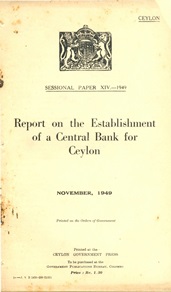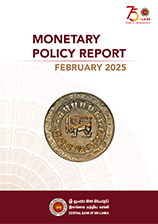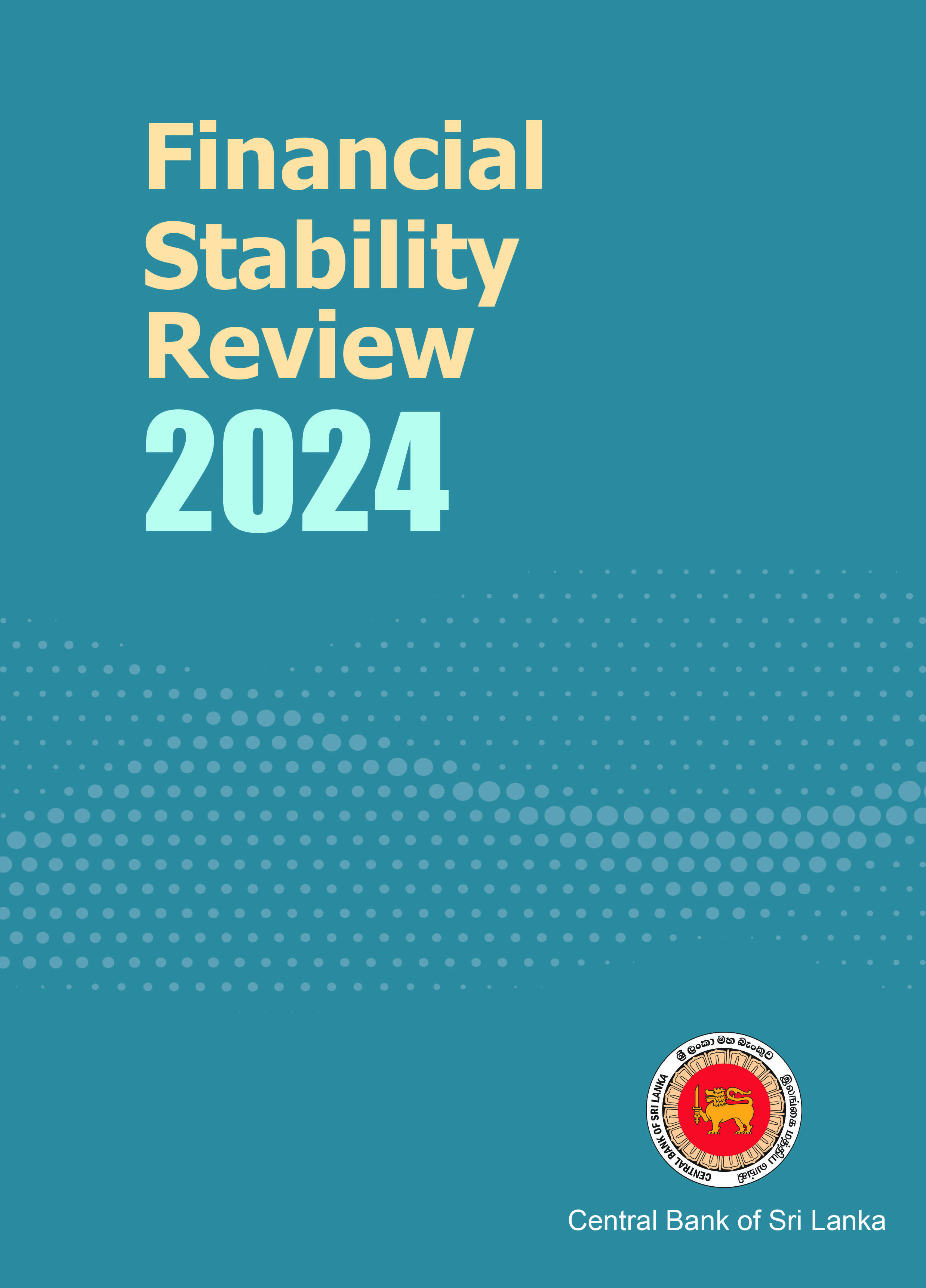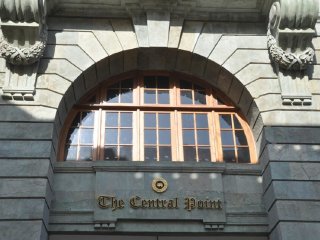Benefitting from the gradual normalising of economic activities in the country, the Manufacturing PMI continued to increase in December 2020, on a month-on-month basis, recording an index value of 61.2. This was mainly attributable to the increases observed in Production, New Orders, Employment, and Stock of Purchases sub-indices.
-
Sri Lanka Purchasing Managers’ Index - December 2020
-
External Sector Performance - November 2020
Amidst a decline in earnings from exports, a number of positive developments were observed in the external sector in November 2020, including a lower trade deficit, and a notable increase in workers’ remittances. Merchandise imports continued to decline supported by the continuation of restrictions on non-essential imports and low global oil prices. There was a notable decline in merchandise exports in November compared to previous months due to disturbances to domestic production processes with the second wave of the COVID-19 pandemic. Workers’ remittances continued to record a growth in November as well. In the financial account, both foreign investment in the government securities market and the Colombo Stock Exchange (CSE) recorded marginal net outflows in November 2020.
-
Swarnamahal Financial Services PLC - Resumption of Business for a Limited Purpose on a Conditional Basis
The Monetary Board of the Central Bank of Sri Lanka (Monetary Board) has made an order permitting Swarnamahal Financial Services PLC (SFSP) to resume business notionally for a limited purpose and limited time under the supervision of the Panel of Management appointed by the Monetary Board (Panel of Management), subject to several strict conditions, in the public interest and in the interests of the depositors of the Company, for a limited period of three (03) months from 13th January 2021 to 12th April 2021, in terms of Section 31(5)(a) of Finance Business Act, No. 42 of 2011 (FBA), only for the purpose of repayment up to fifty percent (50%) of the remaining deposits of the Company (repayment plan).
-
ETI Finance Ltd – Making Application to a Competent Court for Winding Up
The Monetary Board of the Central Bank of Sri Lanka (Monetary Board) has decided to cause Director, Supervision of Non-Bank Financial Institutions to make an application to a competent court for the winding up of ETI Finance Limited (ETIF), in terms of Section 31(5)(b) of the Finance Business Act, No. 42 of 2011 (FBA).
Due to the various irregularities taken place since 2011 and inability of the Board of Directors and the Senior Management of ETIF to address the resultant issues, the Monetary Board on 02nd January 2018, issued Directions to the directors of the Company and appointed a Panel of Management to oversee the affairs of the Company.
-
Imposition of Penalties to Enforce Compliance on Financial Institutions During 2020 by the Financial Intelligence Unit (FIU)
By virtue of the powers vested under Section 19 (1) read together with section 19 (2) of the Financial Transactions Reporting Act, No. 06 of 2006 (FTRA), financial penalties are imposed on Institutions for non-compliances with the provisions of the FTRA. The penalty may be prescribed taking into consideration the nature and gravity of relevant non- compliance of the Financial Institution or the Designated Non-Finance Business.
Accordingly, as the regulator for Anti-Money Laundering and Countering the Financing of Terrorism (AML/CFT) in the country, the FIU imposed penalties amounting to Rs. 2.3 million in total for the period from 01.06.2020 to 31.12.2020 to enforce compliance on Financial Institutions. The Monetary Board of the Central Bank of Sri Lanka decided to publish the penalties imposed on the Financial Institutions by the FIU in order to improve the AML/CFT compliance level in the country.
-
Extension of the Suspension of Business of Perpetual Treasuries Limited
The Monetary Board of the Central Bank of Sri Lanka, acting in terms of the Regulations made under the Registered Stock and Securities Ordinance and the Local Treasury Bills Ordinance, has decided to extend the suspension of Perpetual Treasuries Limited (PTL) from carrying on the business and activities of a Primary Dealer for a further period of six months with effect from 4.30 p.m. on 05th January 2021, in order to continue the investigations being conducted by the Central Bank of Sri Lanka.
-
Continuation of Measures Taken to Preserve the Foreign Currency Reserve Position of Sri Lanka
With a view to preserve the foreign currency reserve position of the country and considering the possible negative impact to the Sri Lankan economy due to the Covid-19 pandemic situation, the Hon. Minister of Finance with approval of the Parliament has issued an Order published in the Gazette Notification No 2206/25 dated 18 December, 2020, extending the period of validity of the Order published in the Extraordinary Gazette Notifications No. 2182/37 dated 2 July, 2020, for further six months from 2 January, 2021, based on the recommendations made by the Monetary Board of the Central Bank of Sri Lanka.
-
Road Map 2021: Monetary and Financial Sector Policies for 2021 and Beyond
The year 2020 was a period most of us would like to forget in a hurry, primarily because of horrendous effects, which the coronavirus pandemic has had over humanity throughout the world. The pandemic that we are currently experiencing is by far the most severe global crisis after World War II. Throughout the last ten-odd months of 2020, all we heard was news of misery, deaths and fear. Our lives have taken a massive shock and we still do not know when we will be able to get back to normalcy again. However, a new year is waiting for us and there is hope as well as some real evidence that things will start to get better relatively soon. As we leave the unpleasant memories of 2020 behind, it is important to feel positive about the future and it would be good to spread some positivity around, whatever the doomsayers around us may say.
-
CCPI based Inflation increased marginally to 4.2 per cent in December 2020
Headline inflation, as measured by the year-on-year (Y-o-Y) change in the Colombo Consumer Price Index (CCPI, 2013=100) increased marginally to 4.2 per cent in December 2020 from 4.1 per cent in November 2020. This was driven by monthly increase of prices of items in both Food and Non-food categories. Meanwhile, Food inflation (Y-o-Y) decreased to 9.2 per cent in December 2020 from 10.3 per cent in November 2020. However, Non-food inflation (Y-o-Y) increased to 2.0 per cent in December 2020 from 1.6 per cent in November 2020.
The change in the CCPI measured on an annual average basis remained unchanged at 4.6 per cent in December 2020 for the third consecutive month.
-
The Central Bank of Sri Lanka issues an Uncirculated Commemorative Coin to mark its 70th Anniversary
The Central Bank of Sri Lanka (CBSL) commenced operations in August 1950 and completed 70 years of its unique and valued contribution to the prosperity of Sri Lanka. To mark its 70th Anniversary, CBSL has decided to issue an uncirculated commemorative coin in the denomination of Rupees 20 with the following key features.










